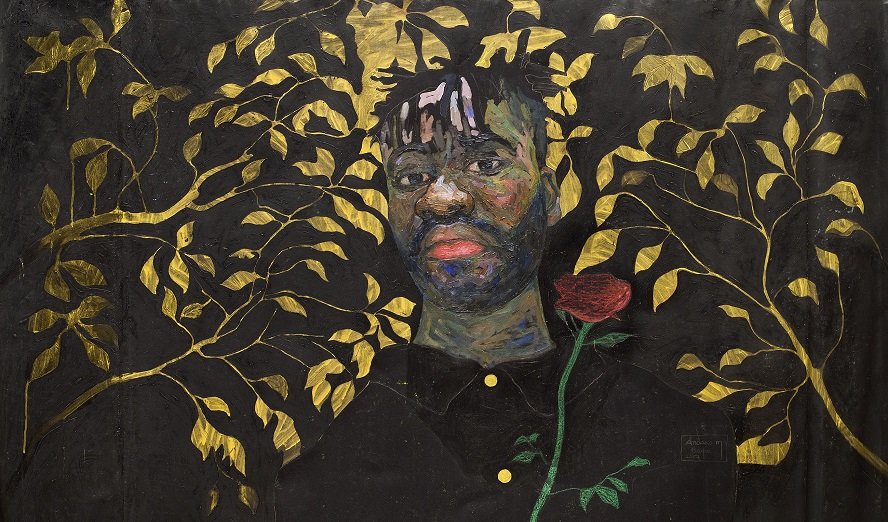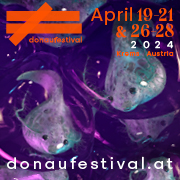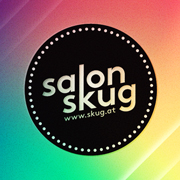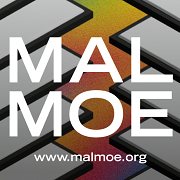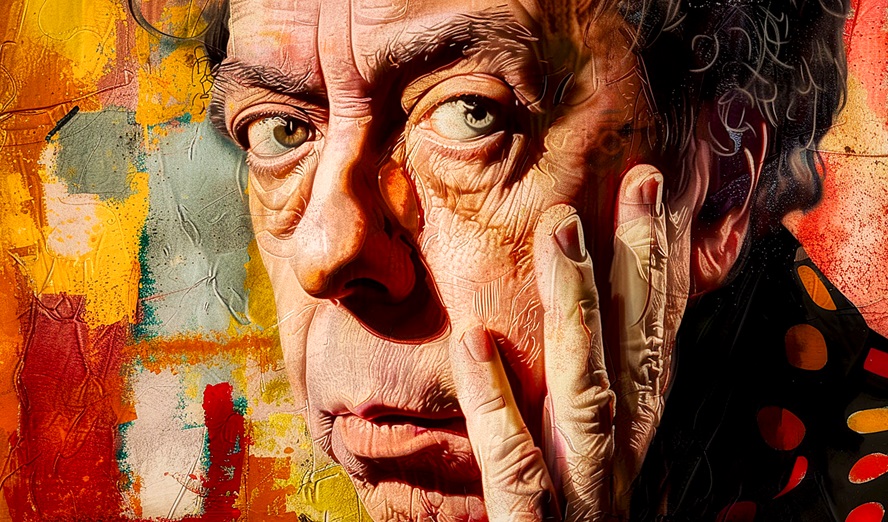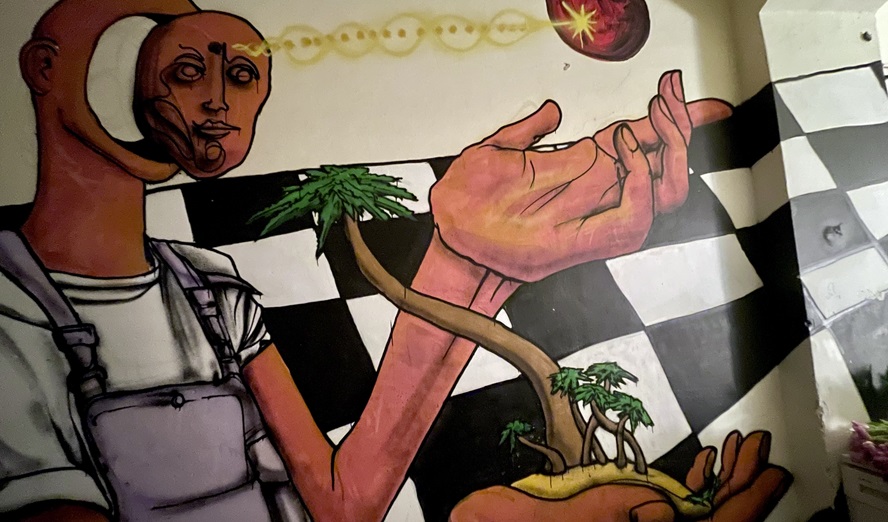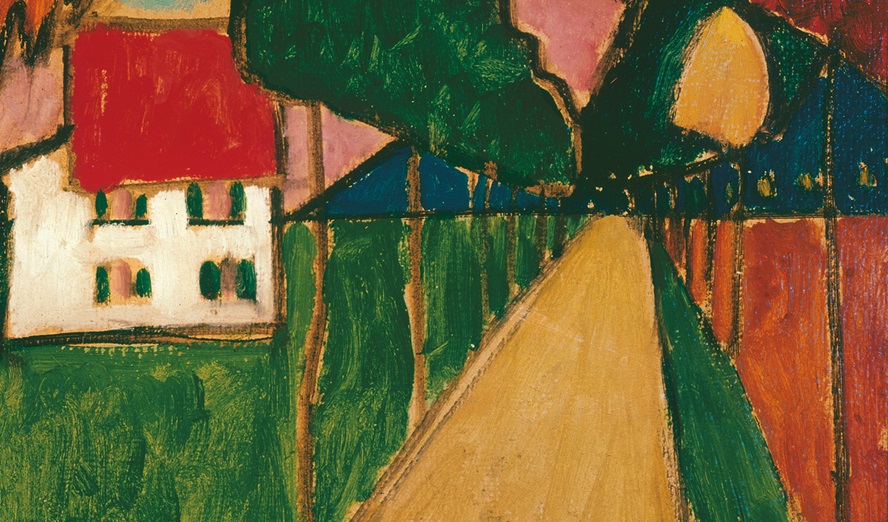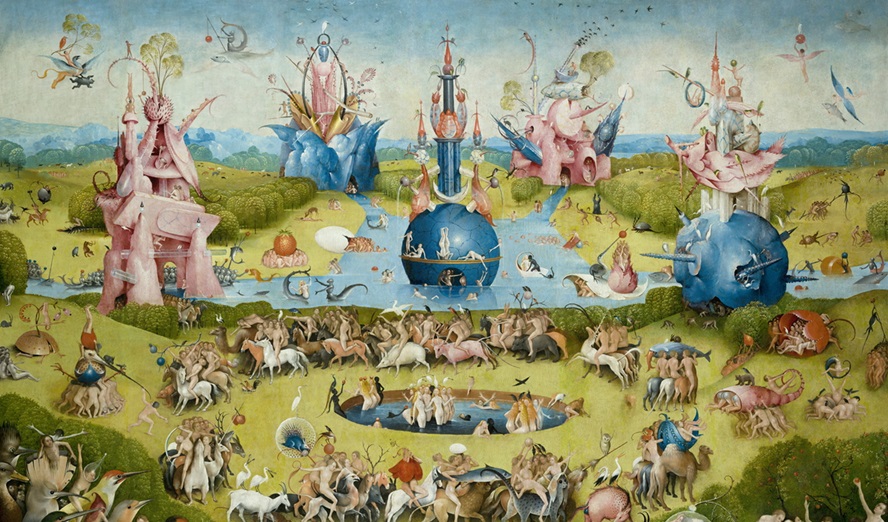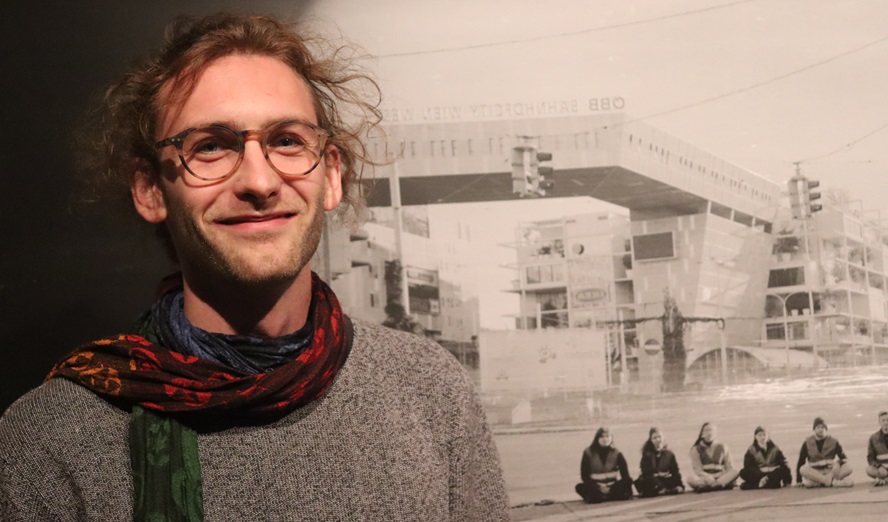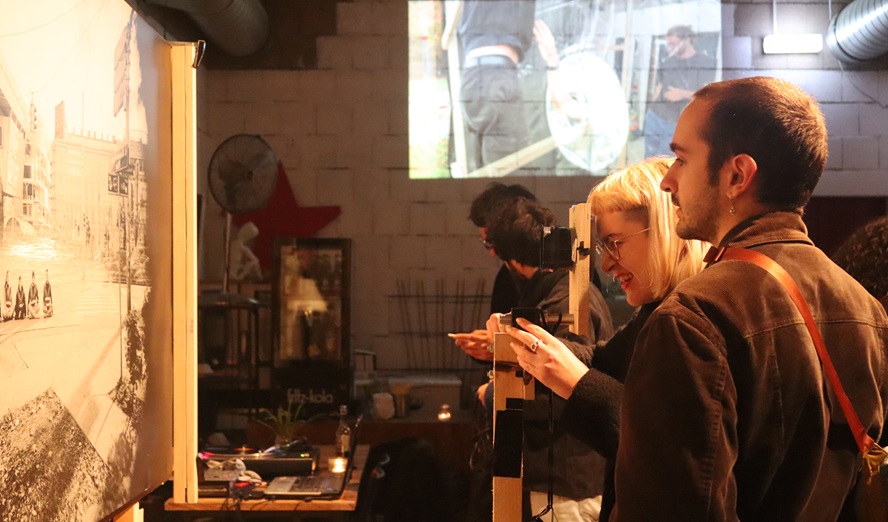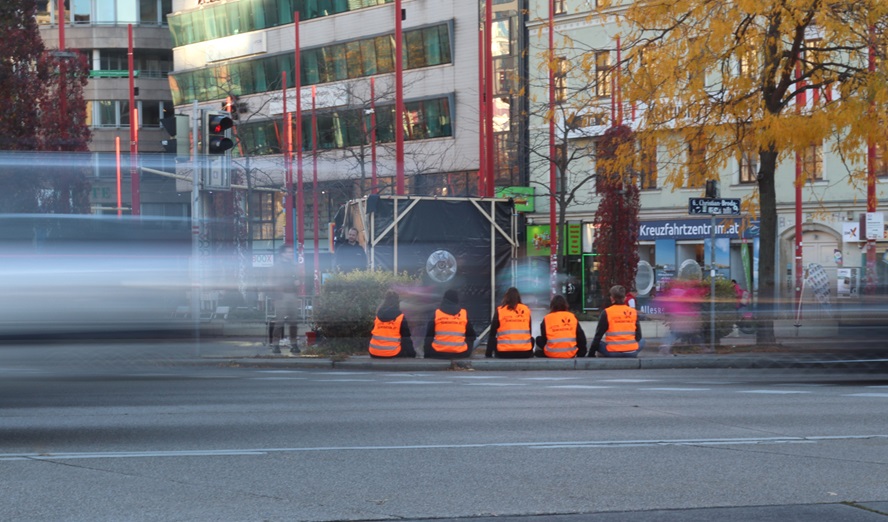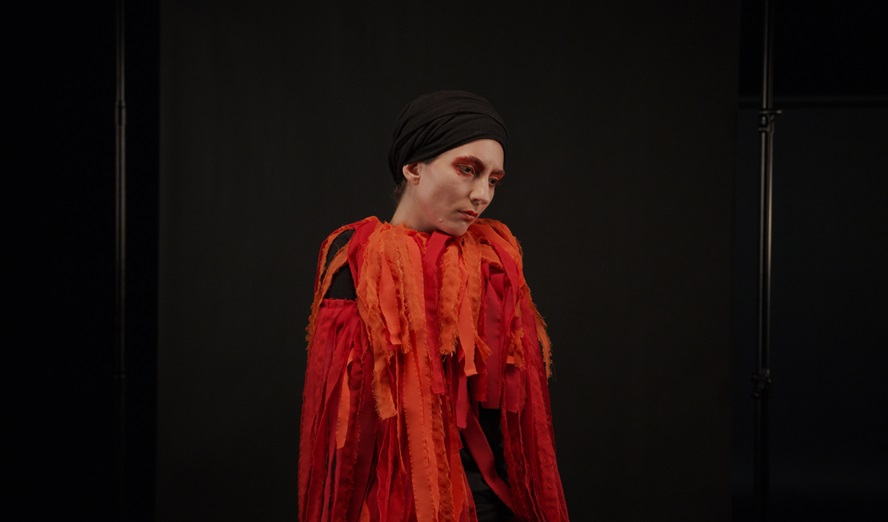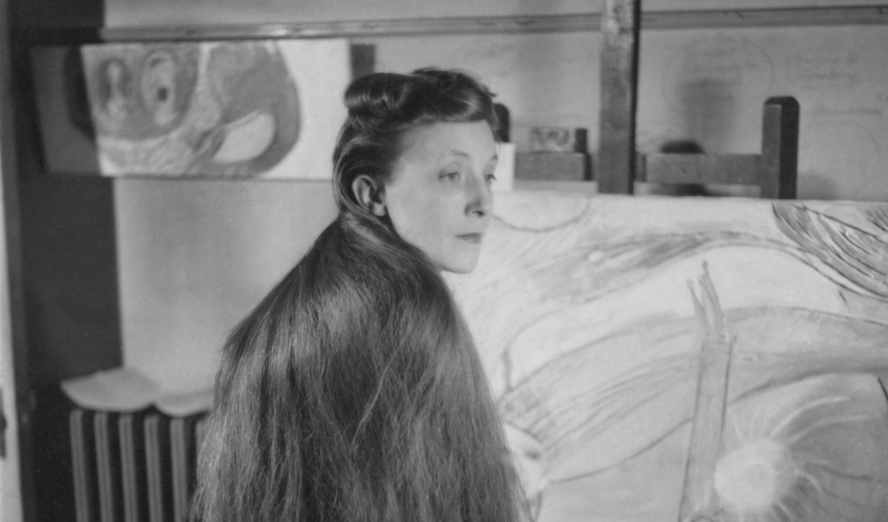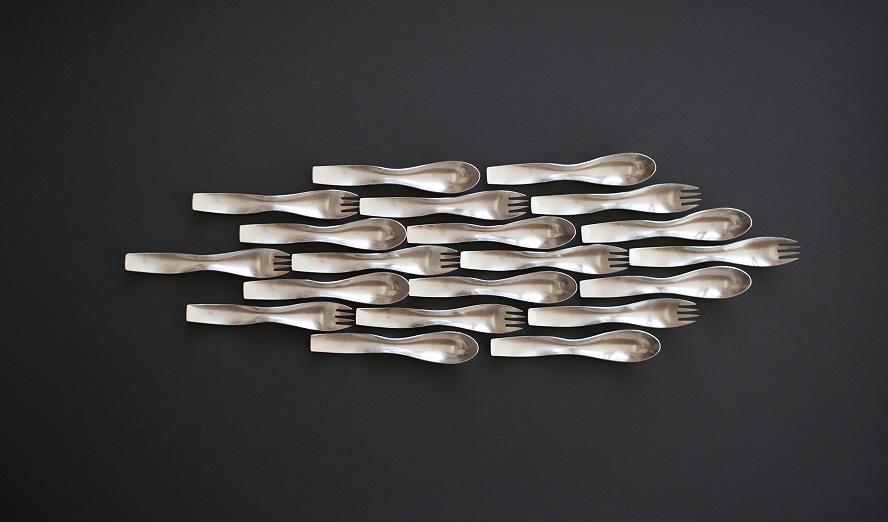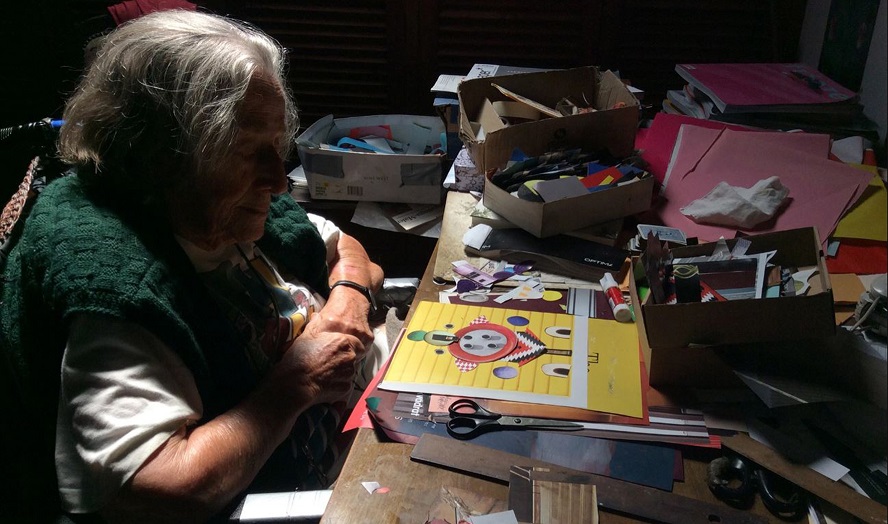We met Amoako Boafo at the academy’s (Akademie der Bildenden Künste Wien, Anm.) studio, which Amoako Boafo shares with other students from his university; a big hall that is separated in many small ateliers. At the time we meet, the space is not very frequented but there is an overall smell of fresh colour and in most of the ateliers there are paintings that are still wet hanging on the walls.
skug: It’s a really nice atmosphere here, this smell of fresh colour.
Amoako Boafo: Yes. The atmosphere is great. There is never a day where you are alone in the studio. You see that the others are working quickly and that they are making progress. You see that and decide that you also want to have the same flow. Then everyone is at the same speed and I suppose that’s what I like about it.
Do you sometimes check out other paintings and works from your colleagues?
Yes. Today I came at 7 o’clock in the morning and there was already someone working. I think he spent the night here. You can also have an exchange with the people about their work. Sometimes I even leave notes with »I really like this« and you have others that do the same. It’s a nice motivating atmosphere.
Do you also support each other?
Yes, we share ideas and discuss them a lot. We are sharing together.
How to start an interview… Let’s begin with… When did you start painting?
Normally, people say »When I was three, my parents saw that I was painting and they encouraged me« etc. But my parents weren’t like that. For me, when I had homework and I would bring that to my Dad so that he could help me, but instead of helping, he would just tell me to do it on my own. If I didn’t manage sometimes, I’d get some pinches. But to try and give him the feeling that I was doing it, I would draw and this is where it started for me. It was more like I was drawing to avoid being beaten but in a way I was also playing with the idea. Not necessarily trying to trick him but to resist him in my own way. Like, I don’t want him to beat me, so I have to do something to avoid that. It was for me a form of resistance even when I was a child but of course I didn’t know then about the power of being an artist.
Do you think it’s special that you have such huge interest in painting? Many people are still looking for their »cause« and yet you give a full commitment to painting. Did you ever regret that?
No, I never did. I don’t know, maybe I have been looking for things that kind of relax me, where I don’t have to think about anything and I can create my own world. I mean when I do sports, I enjoy it but after a while I get exhausted. When I paint I get tired but there is a certain feeling with painting – when you are tired and then you wake up and you see the work you’ve done, you feel refreshed again. For me, that’s painting. Like, I wanted to be free, I wanted to experiment, I wanted to get away from the world once in a while, and with paintings I can get that. Whenever I’m behind a painting I just loose myself and I’m just in it. I mean, I’m kind of aware of the world and what I’m doing but then I also get into a different sphere, where it’s just me.
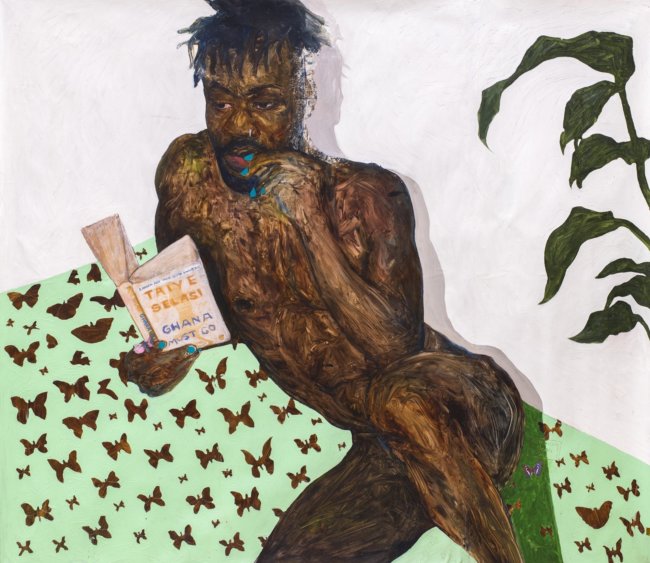
When do you usually paint? Do you have a routine?
At the moment I’m more like a »paintaholic«: like people who are alcoholics, it’s a stupid comparison but I paint everyday. I learned how to paint with the brush and so I stayed with it for a while but if I want to be free as an artist I also have to get away from it. I’m not saying it’s bad to get this academic world of painting education, it’s really good. It is important and it helped me a lot and I think it’s important that one gets that kind of education but I also had the feeling that it cages you. »This is how your stroke has to look like, this is how this has to go etc. If it’s not this color, than it’s not right.« I thought if I want to free myself and if I want to experiment, then why not unlearn what I already know and make my own rules, shift away from the traditional tools. Make small changes; normally I used oil and acrylic but maybe try it on different surfaces, not just canvas but with some paper, cut cartons or whatever… And also, instead of using brushes, sometimes I try to use something else like my fingers or take a tissue and rub it somewhere, this is how I often start. And another thing is that you learn to paint a painting like that and then you learn also how to carve wood or moulding, so why not incorporate the idea of carving into painting? So instead of painting a painting, I would think/incorporate the idea of moulding into painting. This is how I kind of form my figures and also to shift away from traditional way of painting. I’m experimenting with sculpture in painting. In a way, it is a fusion.
Did you ever think of doing sculptures?
I want to learn things really well, like technically well. Then I think I could work with sculptures but at the moment I don’t think it is right for me to do them. At the moment I enjoy being free and with painting I get exactly that, so I will stay with painting for now but in the future I will maybe try to sculpt.
Could you describe your process of painting?
I think its three processes: you perform and from performance you do photography and than from photography you do painting. So I go through all the processes. I would not say that I am a performance artist or a photographer. I am a painter but I go through all the processes before I arrive finally at painting.
Do you take pictures of yourself or do you let someone take the pictures of you?
I let someone do the pictures for me but I already know exactly what I want to do and my movement. With the photographer I think it’s a collaborative work because the person has also have to provide his or her artistic view, like angles and light and things like this.
Do you often need to change or adjust in your paintings?
I always have an idea about how to start a painting but I leave it open to see what is going to happen. I don’t have complete control as I am thinking of paintings as a sculptural form. For example; with the brush, I have full control but with this idea of painting as a sculpture it’s very free. I have an idea but then it goes where it goes and I have to have a good intuition where I know: »That’s okay, you can stop now«.
Does it help to work on several pictures at the same time?
Yes it does a lot. Sometimes I feel a bit constrained while painting because the painting is wet. If it’s wet you can’t work on it but you can move to another painting and that often gives you a fresh idea. It also helps to stay away from the painting a little bit, to see if there is really something else to add or to decide if it is finished now.
Is there ever the point, where you feel; okay that’s it? I don’t want to change anything anymore, the picture is finished now?
Yes. Most of the time I know when to stop but sometimes I over paint them. I had a few moments where I thought: if I had stopped the painting yesterday that would have been better. But generally I know when to stop. Yesterday I finished a painting in two hours, sometimes it takes long, it’s just a feeling and energy. I work on more than one painting at a time. I have many canvases’ laying around and I’m working on them simultaneously. In general I can take up to one week for a painting when I am really motivated, sometimes more.
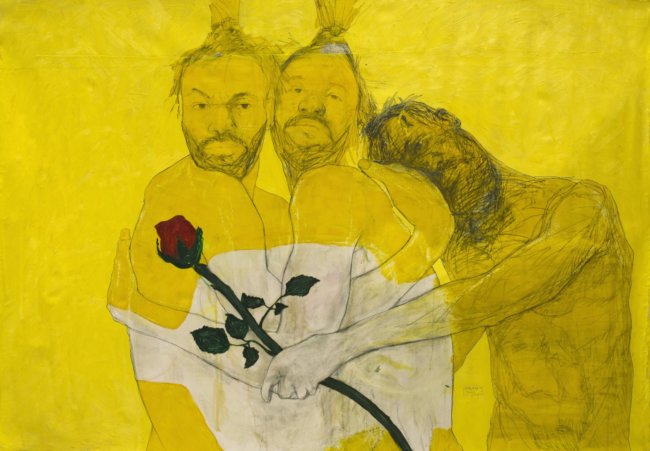
How is it to paint in Vienna, with its heavy and serious painting tradition?
I have my influences here and I also allow the space to inspire me a lot. Painting in Austria has been really cool, there is no stress. I’ve known certain places where you have to produce and there is always something to be seen, results shown. Whereby, here in Vienna it’s much more relaxed for me. I don’t know for others … they complain a lot about not getting inspiration here but for me it is very relaxed. I have my own space; my peace and I don’t feel pressured to produce all the time (even though I paint all the time and this is what I need). I don’t have to be in this stressful circle, this busy circle to be productive.
But obviously you have to live on something, do you ever have in mind that you need to sell?
Yes. I sell once in a while. Here, there are a few competitions that you can apply to. But in order to get this money there is however, restrictions; age limits or the question: did you live in the country long enough? But you can still do it and sometimes you get lucky, than you get some money. That’s how I do it, even though it’s very rare to win something because the space is very white and it doesn’t allow anything in, that doesn’t look white (laughs) but I do sell sometimes.
I saw your paintings for the first time »live« at the Hauptbücherei as part of the »Into the city« project »Archipelago« during the Wiener Festwochen. The presented paintings are self-portraits: On the paintings there is Amoako Boafo with books. These paintings seem to be made especially for »Archipelago«.
It was really a lovely coincidence, I had an exhibition in Ghana with the same paintings, I did a »de-masculinity« and throughout my stay I had lovely conversations. I was thinking, how Ghanaians are going to perceive my paintings, especially since they are not into this masculinity thing, you know, detoxing it. For them it’s like this is how a man should be, this is how a woman should be. I was interested to see how they are going to deal with it so I decided to bring it. I want to have this conversation because it has to be talked about. It was kind of nice, everything went really fine and then I got an email from Wiener Festwochen. They asked me if I could have a meeting with them. I told them I am in Ghana but when I come back we can talk and see what there is. So I came back to Vienna I met them and they liked the detoxing, but they were interested in the body politics, they were interested in it because it fits their concept, which is about »Utopia« and about how you can kind of create / play with space. So I was like okay, I will do it but I had sold most of them. Do you know Kehinde Wiley? The artist who painted Obama’s official portrait? Well, he bought a few of my paintings. So I had to let him know that two of the paintings he wanted had to go for a show (Wiener Festwochen, Anm.). He was okay with it and told me that I should send them whenever I get them back.
What is the constructional idea about the books?
The idea about the books is to challenge and change the mindset. When I came to Vienna there was this stereotype of a black person; either you are doing or selling drugs or they hypersexualized your body. So I thought if these are the main boxes or stereotypes of a black person I am not going to fight it because that is what they know, instead I will paint a picture where I show people who I am and that’s where it started. I want to paint myself to show who I am but then I also added the books to talk and contribute empower the importance of female education; in Ghana, I think in the 1950ies, women were not encouraged or supposed to go to school, they were denied formal education because people thought their place was in the kitchen. To show and support the idea that education is important for all genders I decided to paint portraits of myself holding books from female authors to address the issue of women not having this formal education and to highlight it’s importance.
So in your painting you show your reflection and the content/story of the book.
Yes, there are also books that have great inspiration; I don’t just paint any book. The content of the book is important and also adds up to what I am seeing in the painting and so I choose very carefully which book to paint myself with. I think it is also a way of sharing a different kind of knowledge which is not always there. The Hauptbücherei didn’t have any of the books that I painted myself with. Than they ordered all the books to add them to the library. So in a way it adds to the knowledge that is already there.
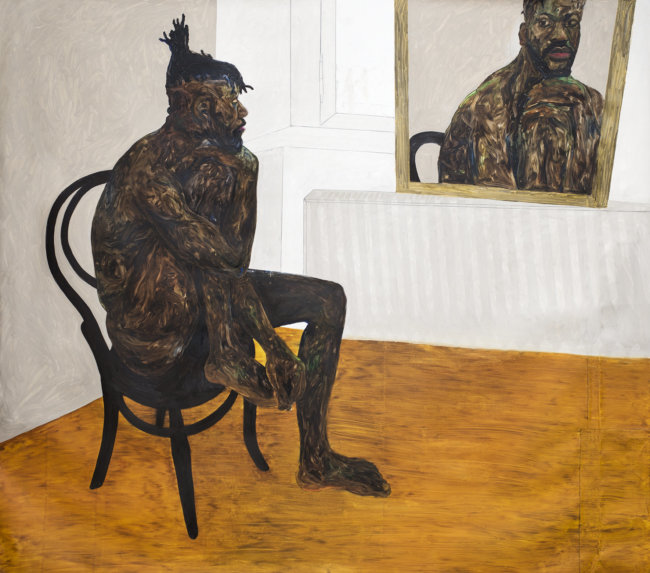
And how do people from Ghana living in Vienna react?
The younger ones are much more open than the older ones. The older ones are more resistant because they can’t really connect with my paintings. They have questions on my style; why am I naked? Or why I have flowers on me or earrings? So with this older community it’s not so connected. The youth understands it though and they come. So I am okay with that.
It must be strange to already automatically address people just because you are from the same part of the world as them. So they seem to feel even more invited to make statements on your work. What are your thoughts on that?
Yes. I wouldn’t say that I represent the whole of Ghana. I would not even say that I represent my whole tribe because there are many different ideas there, different ways of thinking. Of course, with this, it is just hard because when one person gets something wrong the whole group gets blamed. You have the pressure or you feel the necessity to uphold yourself to be good all the time and to show strength, even when you feel weak. I think it would be really nice if things could change. That people get the chance to tell their own stories, rather than having other people imagining their stories for them.
How do people from Austria react to your pictures?
I have had weird questions like »Why do you paint only black people?« I am doing self-portraits a lot and I happen to be a black person, so I don’t know if I should paint myself white or choose another motive to paint. I just don’t say anything most of the time because I think it’s a really stupid question. Then others think it’s too black and then there are others who enjoy the artistic expression of how I play with colours and textures. Others just connect with it on the surface and they buy it. There are others who also enjoy both the artistic expression and the concept of what I’m doing; like what it means that I paint myself with books. So it works in many ways. I mean I don’t need everybody to understand or like my paintings… It’s a mixed feeling but I think that I’m doing well here. I will stay until, how do you say, Austria kicks me out (laughs).
The atmosphere doesn’t get more liberal in Austria.
I’ve not been here long enough to say. For me it is still mixed feelings, it had it’s good and bad sides but I think that they could do more, perhaps. Like having more diverse cultures and being more involved. I don’t know. Look at the academy, it’s great but it is quite closed. Like how many different types of people do you see here? It’s a process but I hope that changes more in the future.
How is the situation in the art school?
The academy used to be easier to access because you could do online applications and if they liked your art they would invite you. Now you can’t even apply online. You have to be here. If you are in a foreign country without access to a visa to come here, then you are out. Perhaps it is political, maybe they don’t want so many immigrants coming through. They want to keep it very European, or should I say white?!
Do you think that artists are obliged to make changes in society through their works?
Well, if you live in a country where there is a lot to do, I think you need to reflect on that as an artist. Here, there is obviously a lot to do. One doesn’t necessarily need to be political but I think it is important to reflect on your time. If it happens around you, how do you deal with it? So yes, I think it is your job as an artist to kind of do it.
People seem to be paralyzed or something and somehow not able to get active. In the sense of »I am fed up because I see no change in people«, the right politicians win again.
I did a few paintings where I was complaining a lot about things. I was painting myself in the subway being stopped by the Police. I think that for some that was too heavy and so they didn’t interact with my painting. I had the feeling that they were fed up with me complaining all the time. So I did have these moments. I decided to do paintings that do not complain but rather show the way I want to be perceived. However, that doesn’t mean that my paintings are light but I played more with different ideas and also worked more the surface now instead, so that one doesn’t automatically have to connect with the political angle. You can decide what you want; if you want to connect with it politically, the message is there. You can choose to stay with the painted surfaces if you want to connect with the colours and contrast. So I think I found a way to put these two angles together.
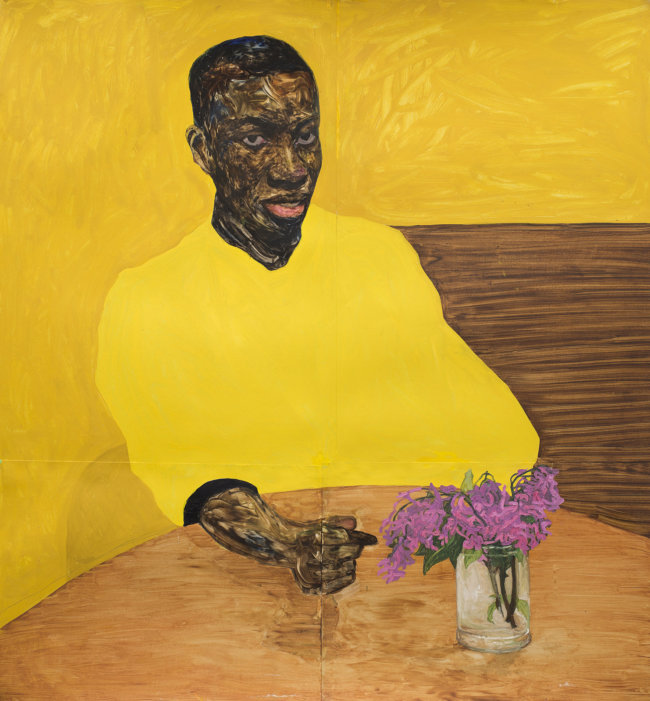
You portray yourself many times with books but in this picture you are holding a mirror in your arm and you are looking at yourself. The reflection in the mirror looks straight outside of the painting to the recipient.
I worked with the books but then I was also questioning if a person is only worthy when they have certain knowledge? When they are »intellectual«? Or are people who do not have that knowledge worth less? So I use my own reflection in the mirror as my own knowledge. In the sense that I value my knowledge, even so you (as the recipient) do not know what exactly it is. So the mirror is a reflection of myself, my knowledge and how I position myself.
Would you say that knowledge demotivates people? Maybe it is easier not to know.
It is definitely easier not to know. What you do not know does not bother you. That’s the easiest way. I also think that it is really good to know what is going on and to decide if either you want to deal with it or not. The question for me is which knowledge is more »valuable«? That’s what I try to question with my paintings and try to give or add another form of knowledge to the one that everyone thinks about as the normal or the good one. In the mirror I show myself as someone who happens to be big, I am enough for myself and it is also a form or an idea of self-validation.
Is it self-validation?
Yes self-validation is the main idea of these self-portraits.
There is a lot of process in your pictures. Do you think that you could have painted these pictures already, perhaps one or two years before?
I think that you should have your time. I was thinking about self-portraits for a long time but that did not really make sense for me at that time. I was in Ghana and it was a different struggle. Here in Austria it is also a different struggle and the idea of self-portraits makes perfect sense. I had questions and I thought with painting myself I could find my answers to that.
How is it to go back to Ghana? Do you feel more removed now that you’ve been in another country for quite some time?
No. I have a large range of friends. I grew up on the streets, not in the sense that I did not have a home but I loved the streets and spent a lot of time there. I spent a lot of time with people who were living on the streets. So when I’m on the streets, I’m on the streets. When I go to the sport places, I do sports. When I do arts, I do arts. I am fully present in the different situations. When I go back home I do not feel like an outsider. I am the same person I was when I left Ghana. But there is this added pressure, coming back from Europe means that you have money. Some people expect things or they think that you do owe them something but I still feel very welcome when I go back.
I think it is something very special to be able to see and experience different societies.
Yes it is a privilege to experience two different continents and to tell the story myself about how it is in Europe. I think it is a luxury and I am happy to be able to be here and there at the same time.
What will happen after art school?
Honestly, I don’t think about it. The first concern for me is my motivation and my passion to paint. I take it one day at a time: You are a bit scared because you don’t see the future nor know what is coming but at the same time you are happy because you know that you are going in the right direction. I am relaxed, doing my paintings because I love doing it. If it goes fast, I am riding fast; if it goes slow I am riding slow. There is no pressure at all.
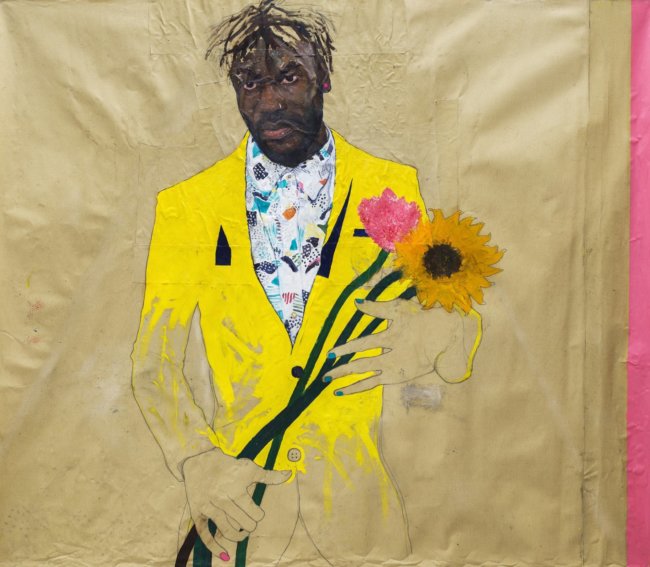
Thanks to Brian Ó Gallóglaigh for editing and proofreading.
Links:
https://amoakoboafo.wordpress.com
http://www.festwochen.at/programm-2018/detail/archipelago-1/
